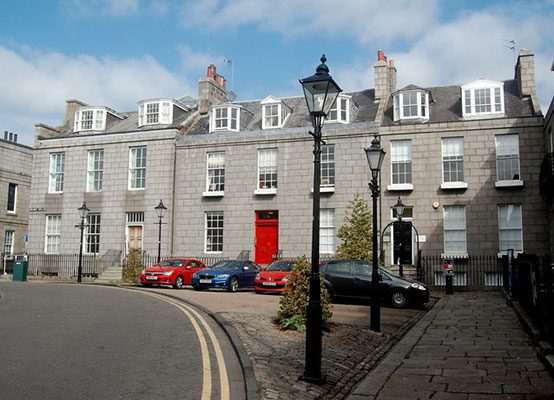Why 19th-Century Design Makes People Happy

Words on the Street highlights the best writing on urbanism we’ve encountered this week at New Urbs. Post tips at @NewUrbs.
Classical Architecture Makes Us Happy. So Why Not Build More of It?
There is a fair amount of research suggesting that traditional architecture, such as Georgian and Victorian terraces and mansion blocks, contributes to our wellbeing. Beauty makes people happy. This can be measured through house prices, which consistently show bigger increases for more traditional buildings. A study from the Netherlands showed that ‘even controlling for a wide range of features, fully neo-traditional houses sell for 15 per cent more than fully non-traditional houses. Houses with references to tradition sell for 5 per cent more.’ London terraced houses built before the First World war went up in value by 465 per cent between 1983 and 2013, compared to 255 per cent for post-war property of the same type. Beauty sells, but because it’s rare, it’s exclusive. [Read more…]
—Ed West, The Spectator
Picture yourself on a bustling commercial street in a hip neighborhood of a newly revived city. You cruise the sidewalk, checking out the businesses that line the glitziest block or two. Here’s what you’re likely to see: a high-end restaurant with pricey small plates and an ambitious chef; a gourmet pizzeria with locally sourced toppings; an artisanal yogurt shop; a microbrewery; and a coffeehouse. And maybe another coffeehouse. A thought pops into your head: This isn’t a business district, at least not in the old-fashioned sense. This is a food corridor. Scarcely any commerce other than restaurants exists here. What we’re talking about is café urbanism. …. [I]n the end, the secret ingredient of a sustainable neighborhood comeback is commercial diversity. Cafés are wonderful; in some places, they may not prove to be enough. [Read more…]
—Alan Ehrenhalt, Governing
So You Want to Build a Trolley…
American cities today are seriously enamored of trolleys—modern streetcars have popped up in 16 cities, with more soon to open in Los Angeles, New York City, Detroit, Fort Lauderdale and Milwaukee. …. But will this fascination with streetcars end in heartbreak? When it works—as with Portland, which got a head start on second-generation streetcars in 2001—streetcars can unify cities, boost real estate and draw investment. When it doesn’t, though, cities can end up with millions of dollars dumped into a glorified theme park ride. Recent projects in places like Cincinnati and Tucson, Arizona, have been budget-busters that have cost about $50 million per mile of track, says Jeffrey Brown, a transportation expert at Florida State University. The earlier wave of second-generation streetcars ran about $10 million to $30 million a mile. [Read more…]
—Debra Bruno, Politico Magazine
The city, which has long struggled with a declining economy and a violent reputation, is in the spotlight. This past December, the Newark Police Department presented statistics showing crime in the city was at its lowest rate since 1967. New investors have poured around $1.7 billion into residential, commercial and industrial projects, according to the city’s Department of Economic and Housing Development, and bougie businesses like Whole Foods are opening their doors. Add to this a burgeoning arts scene, iconic architecture, surrounding universities and proximity to both Manhattan (it’s about a 30-minute train ride from Newark Penn Station to downtown Manhattan, with trains leaving from both stations frequently) and Newark Liberty International Airport. [Read more…]
—Emily Nonko, New York Post
The World’s Best Urban Gondola Ride
The L is the best mass transit system in the United States. Not the fastest, nor the most reliable. Not the newest, nor the longest. The best. Yes, it has its drawbacks. It’s undeniably loud, and a quarter of the year, you freeze your ass off waiting on cement platforms 30 to 40 feet above the street, where the wind is cruelly pronounced. Even so, the L is the best because of where you are when you ride much of it. Elevated. So much can be seen. The L reveals a Chicago of a thousand unconsidered angles, offers a view without filter or comparison. So this winter I rode the L—the whole thing, in one day—to see what I could see. To take the measure of a city in full. [Read more…]
—Tom Chiarella, Chicago Magazine